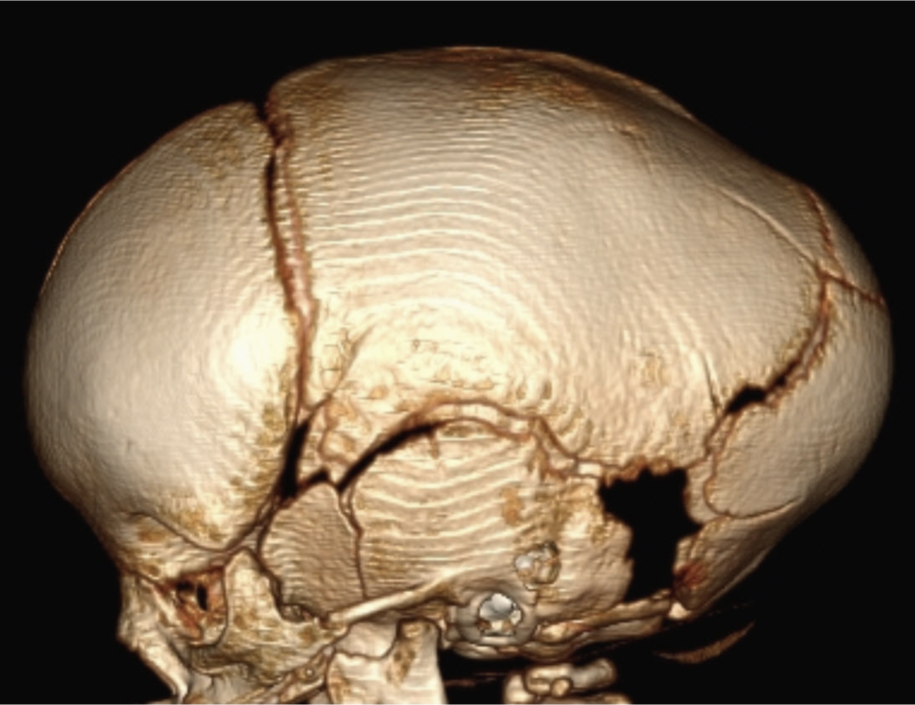
Is the pediatrician concerned that your baby’s head is misshapen? If so, the doctor might order a head CT to evaluate the cranial sutures to make sure that they have not closed prematurely. A baby’s head can also become misshapen from positional changes, including deformities that might have occurred in utero when the baby was developing.
The skull is composed of multiple bones that are connected at the fibrous cranial sutures. The sutures allow the skull to increase in size to accommodate brain growth throughout infancy and childhood. They also allow the skull to mold with mild overlapping of the cranial sutures during the birthing process, when a slightly smaller head size is advantageous for an easier delivery. Normally, the sutures become progressively narrowed and ossify as the child develops. The large sutures persist into early adulthood and can still be seen on radiographs and CT images as thin, irregular lines between the large skull bones.
Some sutures normally close in infancy and childhood, such as the metopic suture. Even though this suture normally closes, it can also close prematurely leading to a pointed configuration of the frontal bone (Fig. 1a) and narrowing of the space between the eyes (Fig. 1b).


Craniosynostosis refers to the premature fusion or ossification of the cranial sutures and can occur from genetic etiologies, as well as from some metabolic disorders and mechanical changes, such as in a child with shunted hydrocephalus. With premature closure of a suture or sutures, relatively predictable head shapes and facial distortion occurs. A child with premature fusion of the sagittal suture, the most common type of craniosynostosis, presents with an elongated head shape, as the skull continues to grow along the lambdoid and coronal sutures (Fig. 2).

A child with unilateral coronal synostosis presents with flattening of the frontal region on the affected side, and the head shape becomes somewhat trapezoidal. On radiographs, a classic imaging finding is the “harlequin eye,” as the orbit remodels adjacent to the fused coronal suture (Fig 3).
Although radiographs and ultrasound can be used to assess the sutures, a 3D head CT readily demonstrates the normal sutures, the prematurely fused sutures, and allows the doctor to consider different treatment options. At Cincinnati Children’s, these CTs are performed with a slightly lower radiation dose, as the bones are the primary interest, and multiplanar and 3D reconstructions are computer generated without any additional imaging or radiation exposure to the infant or child.
Contributed by Dr. Marguerite M. Caré and edited by Janet Adams, RDMS, RVT, CNMT, RT(N)